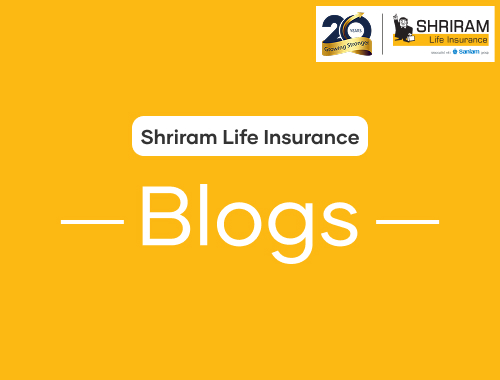Everything You Need to Know About Life Insurance Death Benefits
- Posted On: 15 Nov 2024
- Updated On: 15 Nov 2024
- 2125 Views
- 5 min read

Table of Contents
- What Are Death Benefits?
- How Do Life Insurance Death Benefits Work?
- What is covered under death benefits?
- What is Not Covered Under Death Benefits?
- Tax Saving Benefits on Death Benefits
- How Does the Death Benefits Pay-Out Work?
- How to Claim Life Insurance Death Benefits
- Choosing the right Life Insurance Policy
Death benefit insurance is an integral part of financial planning. It's a life insurance product that serves as security on behalf of the policyholder with benefits to protect their loved ones. This blog takes you through everything you need to know about Life Insurance Death Benefits - read on to understand it completely and also how it works and how to make a claim, should the need arise.
What Are Death Benefits?
Death benefit is a type of monetary compensation that is paid out to the beneficiary named in the policy, following the death of the insured. This financial support is meant to pass on economic value to loved ones in the absence of a key member of the family. It serves as a safety net because this brings a certain stability in a very uncertain period of life while coping with the loss of a loved one.
How Do Life Insurance Death Benefits Work?
In case the policyholder passes away during the tenure of the insurance period, the insurance company processes the claim and pays the named beneficiary the death benefit. The amount paid out by the insurance company is based on the terms of the policy that may include other riders or endorsements.
Life insurance policies are broadly classified into the following types, which include:
- Term Life Insurance: Designed for offering death benefits over a specified tenure.
- Whole Life Insurance: The policy pays out during the insured lifetime plus a cash value component.
- Universal Life Insurance: The premium and death benefit can be varied by the policy owner.
Having an understanding of how these policies work may provide you with insight into the right insurance policy for you.
Types of Death Benefits
- Basic Death Benefit: The insured sum of money that is paid to the beneficiary; in other words the standard sum agreed upon and mentioned as the sum assured while the policy was purchased.
- Accidental Death Benefit: The occurrence of death due to an accident, and an added benefit that would be given in case the death involved an accident. This is an extra financial security to cover a very unexpected and unusual circumstances of accidental death.
What is covered under death benefits?
Under normal circumstances, death benefits for life insurance usually cover:
- Death caused by natural or natural causes, such as sickness.
- Accidental deaths, as described above.
This benefit is the main protection secured through the policy. The policy is usually created with a sum in mind for this death benefit and that is usually a multiple or factor of the premium amount paid. The death benefit is the payout that will allow families to remain financially secure even in the event of the loss of one of their loved ones which is why the value of the policy should be calculated with care.
What is Not Covered Under Death Benefits?
Despite the wide range of coverage that exists under death benefits, there are certain exclusions provided under it:
- Suicide: Most policies do not pay the claim in case the insured commits suicide, within the stated term which is typically within the first two years.
- Fraud: If the insurer realizes that the policy was acquired through deceit, then such a claim may be turned down.
- Risky Activities: If the death results from extreme sporting activities or felonies, then the company might deny compensation.
Understanding these exclusions leads to better understanding of how the death benefit claim works in a life insurance policy.
Tax Saving Benefits on Death Benefits
While one purchases life insurance for the protection, the investment in this plan also comes with some tax breaks. Life insurance death benefits are typically not taxed especially if it is within the norms of premium to sum assured multiple. Usually, the proceeds paid out are not taxed in the hands of the beneficiary, thereby providing a tax-efficient means to pass along that wealth to the beneficiaries.
However, there are some exceptions. It is generally prudent to run these details by a financial advisor or tax professional to understand their implications in your particular situation.
How Does the Death Benefits Pay-Out Work?
The pay-out process for life insurance death benefits is straightforward:
1. Notice:
The beneficiaries must notify the insurance company of the death of the policyholder.
2. Documentation:
The claim intimation must also include official death certificates issued by local authority, along with required identity proofs of the beneficiary along with the policy document. Additional affidavits or documentation may be sought based on the specific policy / details and a detailed checklist from the company is readily available to guide the family with a complete submission.
3. Examining the Claim:
The insurance company will then examine the claim based on the provided documentation, matched with the pre-existing terms of the policy.
4. Payment:
Once examined, the process goes through the next stage, which is claim settlement. The beneficiary will receive the death benefit payout direct to the registered bank account of the named beneficiaries.
How to Claim Life Insurance Death Benefits
Claiming death benefits against life insurance may seem daunting, but it need not be. One can ensure the following steps are taken so that should the need arise, the loved ones and beneficiaries have ready access to the documents they need
1. Policy Copy: Kindly provide a copy of the life insurance policy document.
2. Notify the Insurer: The insurance company should be notified promptly about the death.
3. Provide These Documents: Collect all the documents required, including a death certificate, policy number, and identification.
4. Fill Out Claim Forms: Most providers will have you fill out a claim form.
5. Send Claim: Send the completed form, and any other information the provider may require, to the insurer.
6. Ask: Keep in touch with the insurer to confirm that your claim is being worked on.
In case of doubt, the customer care team can provide you with the required guidance.
Choosing the right Life Insurance Policy
Choose the right kind of life insurance coverage to ensure that your loved ones are covered well. For this, consider the following:
- Assess Your Needs- Look at your family's current financial position and potential future requirements. On the website one can find useful tools to evaluate the human life value or income replacement value - these are guidelines to understand how much life insurance coverage one should ideally take in the policy. The death benefit is a direct outcome of this number in the policy.
- Compare Different Plans- Compare a few product plans such as Assured Income Plan, Early Cash Plan, or Premier Assured Benefit and choose one for your own purpose.
- Consider Additional Riders- Some optional riders, such as an accidental death benefit, can give you added strengthening to your coverage.
- Find a Financial Advisor- A professional advisor can guide you on the right approach, explain the various plan options and help you match the right plan to your financial goals and affordability.
Frequently Asked Questions (FAQs)
1. Do I need death benefits in life insurance?
Yes, if you have dependents or any kind of debt, then life insurance will definitely help your loved ones secure their financial future. In the rare situation that you have no dependents or no debts to cover, it may not be required for you.
2. How much should I buy in death benefit life insurance?
Ideally, you'd want at least 10-15 times your annual income, though personal circumstances are different. This should also factor in the number of dependents and the various financial milestones you’d have to pay for.
3. Can I have multiple beneficiaries on my life insurance policy?
Yes, most policies allow having more than one beneficiary, divided either by equal shares or percentages or as specified by the policyholder which is then endorsed in the policy document for future reference.
4. Are death benefits paid on life insurance taxable?
4. Are death benefits paid on life insurance taxable?
5. Can I change my life insurance beneficiary?
5. Can I change my life insurance beneficiary?
6. How does death benefit work with life insurance?
The death benefit provided by the policy is received by the named beneficiaries in case of insured's death at the time of demise.
7. What is the maximum age to buy death insurance?
The maximum limit of age varies from one insurer and type of policy and can be inquired to obtain information from the service provider.
8. Is death benefit and life insurance terms same?
Death benefits constitute the sum paid upon death; conversely, life insurance is an agreement that provides for that benefit.
9. What happens to the death benefit if a beneficiary dies?
If a beneficiary dies, typically the benefit will be paid either to a contingent beneficiary or to the insured's estate, depending upon the policy.
10. What type of death does term insurance not insure?
It's usually not covered in case of suicide within the first two years of death.
In order to figure out a decent enough investment plan, knowing about life insurance death benefits is essential. Whenever you are looking at a policy for yourself or reviewing your existing coverage, knowledge is power. Make knowledgeable decisions, and thereby you can ensure your loved ones are extremely well covered in your event of passing. Find more on benefits of life insurance by visiting our Retirement Plans, Savings Plans, Child Plans, and Protection Plans to solve your specific requirement needs.
Efficient Pension Withdrawal in India: Steps and Tips for Retirees
OTP Verification
Please Enter OTP that has been sent to your registered
Mobile Number +91
You may be interested in
People also search for
Our Other Popular Plans








